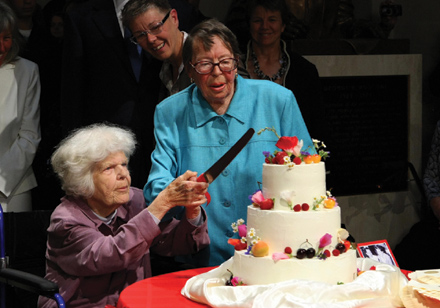651 Duncan Street in San Francisco, the home of lesbian activists Phyllis Lyon and Del Martin, is set to become a city landmark, and the first lesbian landmark in the western United States.
On Tuesday, the San Francisco Board of Supervisors voted to make the home, located in the city’s Noe Valley neighborhood, a landmark. A second, ceremonial vote is scheduled for next week.
“The home they shared for more than half a century was the site of many community gatherings and has clear historic value that needs to be preserved and memorialized,” said Noe Valley Supervisor Rafael Mandelman, who sponsored the resolution, in a statement reported by the San Francisco Chronicle. “I’m proud of this historic action to create the first local landmark focused on the history of the lesbian community.”
The couple first purchased the house in 1955. They founded the country’s first lesbian rights organization, Daughters of Bilitis, the same year, and the house soon became a hub of lesbian social and political organization.
“The Daughters of Bilitis didn’t have an office space, so 651 was really ground zero for the lesbian rights movement at the time,” said executive director of the GLBT Historical Society Terry Beswick, in a statement reported by the AP. “It was a place where people could be safe and reveal their sexuality.”
Lyon and Martin became the first same-sex couple to be married in San Francisco in 2004, although the marriage was soon after voided by the state’s Supreme Court. They married again in 2008, the same year Martin passed away. After Lyon died in 2020, the house passed to Martin’s daughter, and was sold in September of that year.
The Chronicle reports that the “Friends of Lyon-Martin House,” an organization formed to safeguard the house from demolition, will put forth a proposal in six months’ time for how to preserve and memorialize the home. Beswick and Shayne Watson, an architectural historian also involved with the project, have said that the house would receive a plaque as “a bare minimum,” and have expressed interest in preserving the house as a center for LGBTQ+ life, research, and activism.


What Do You Think?